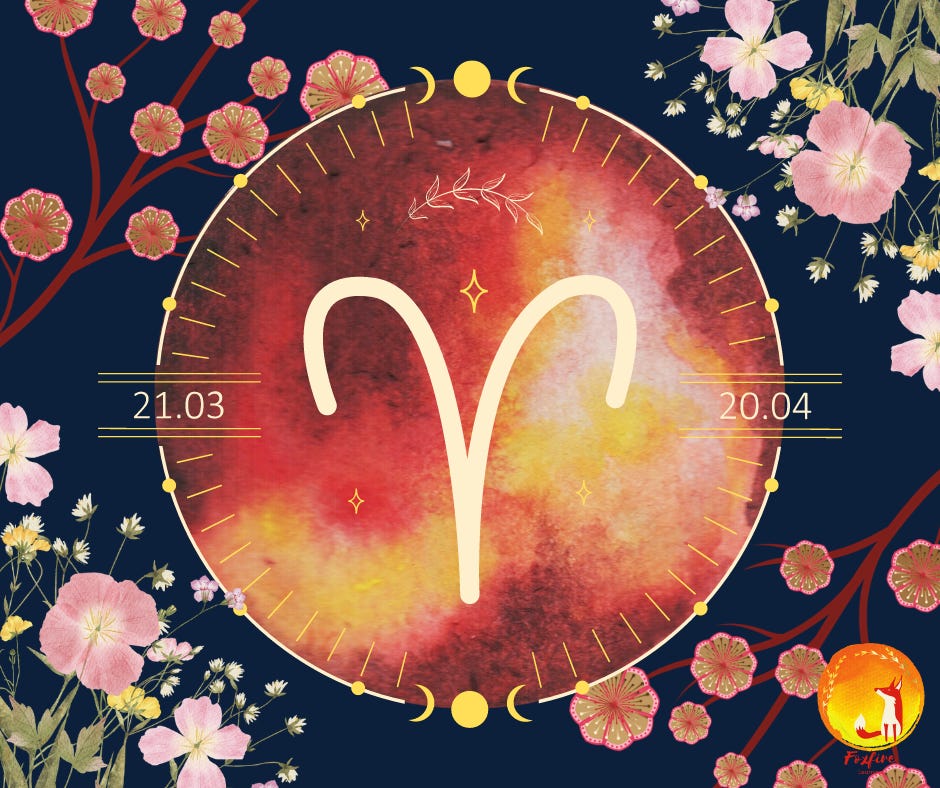Happy New (Astronomical) Year, new moon in Aries and the Spring Equinox!
Also in this edition: Goddess Eostre and her (not-so-proven) link to Easter, what's happening at the Vernal equinox (first day of astronomical Spring), my cleavers guide and the Aries New Moon
Hello dear friends,
Welcome to the second of this year’s eight free editions of this newsletter in line with the Pagan Sabbats of the Wheel of the Year.
It’s finally upon us: the Spring (also known as Vernal) Equinox and a turn in the Wheel of the Year which means that the days will draw out (for those of us in the Northern Hemisphere) until the Summer Solstice in June. Aaaah. This turn of the wheel usually brings with it the promise of warmer weather, the sound of busy insects and the first blossom on the trees. We also see lots more plants emerging from the hedgerows, one of which is a fantastic Spring time tonic - helping to cleanse the lymphatic system due to its diuretic properties. In case you missed it in the last edition of my newsletter, here’s the link to my guide on the Folklore and traditional uses of cleavers so that you can have a go at your own (internal!) Spring cleanse.
Spring (vernal) Equinox
So what is actually going on in the skies at this time of year? As a previous science teacher, I’ve relished the opportunity to make the infographic below in order to explain what’s happening astronomically at the equinoxes and solstices!
So on the Spring and Autumn Equinoxes the sun is shining directly over the equator giving us equal hours of daylight and darkness on both occasions. In the Northern hemisphere we call the Equinox that falls around the 20/21 March the Spring Equinox, however, in the Southern Hemisphere, this will be the Autumn Equinox. Also for a bit of wider context, the tilt of the Earth’s axis as she travels around the sun will become more tilted towards the sun on the approach to the Summer Solstice (20/21 June) giving us the most hours of daylight of the year, and the opposite occurs on the Winter Solstice where we get the most hours of darkness.
The Spring Equinox also heralds the first day of Spring according to the Astronomical calendar. If you read the last edition of this newsletter you’ll know all about the difference between Astronomical and Meterological Spring.
How will you be marking this special occasion in the Wheel of the Year? I’d love to hear in the comments below. Take a look at my Equinox and Solstice rituals which you can find in the Moontime Musings Archive.
Ostara
Each of the above 4 solar events correspond to 4 Solar Fire Festivals (also known as Quarter Days) in the Wheel of the Year and the festival associated with the Spring Equinox is named after a Pagan Goddess of fertility who goes by many names: Ostara, Eostre, Ēastre, (Old English); Ôstarâ (Old High German); Hausos, Ausōs or Austrōn (Proto-Germanic).
Contrary to popular belief, the Christian festival of Easter does not in fact have any direct link to Goddess Ostara but is believed to have come from an old German word for East ~ eostarum which is Latin for ‘dawn’ (Source: Rebecca Beattie)
All of my courses are centred around the Wheel of the Year with this year’s Ecoliteracy for Educators beginning today! It’s not too late to join this year’s cohort, just drop me a line to get access to the course materials: hello@foxfirelearning.com
Aries New Moon
The Spring Equinox is the astronomical event occurring today but we also have an exciting astrological event in the form of astrological new year. Aries is the first sign in the Western Zodiac, offering a third opportunity to celebrate a new year (see Gregorian New Year and Lunar New Year posts). At 0° in the sky, the cardinal fire sign of Aries represents new beginnings and, in my humble opinion, is a better ‘new year’ to set intentions for the months ahead. Ruling the head, Aries energy invites the opportunity to reclaim your dreams, declutter and direct any impatient energy into physical exercise or free writing.
That’s all from me for this Full Moon. I’ll be back in 2 week’s time for my paid subscribers on the Libra Full Moon. See you then.
Thank you for reading and New Moon blessings x
Lastly: If you know anyone who may be interested in this newsletter, please share the link below. Thank you x








Thank you!